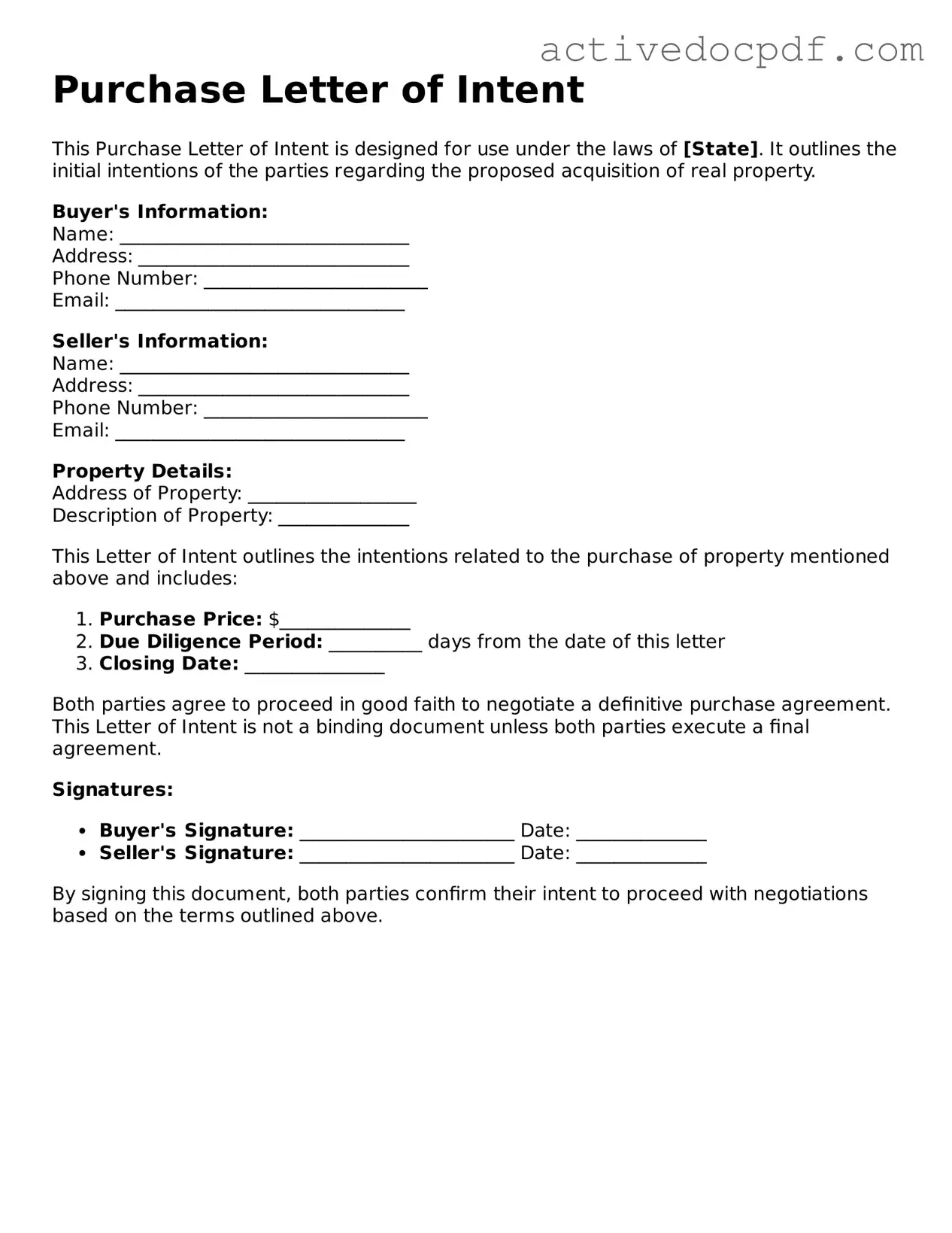Guide to Filling Out Purchase Letter of Intent
After completing the Purchase Letter of Intent form, you will be ready to present your intentions regarding a property purchase. This document serves as a preliminary agreement between you and the seller, outlining the key terms before entering into a formal contract. Follow these steps to ensure accuracy and clarity when filling out the form.
- Begin with your contact information: Fill in your full name, address, phone number, and email address at the top of the form.
- Provide the seller's information: Enter the seller's name, address, phone number, and email address in the designated section.
- Describe the property: Clearly state the address and any relevant details about the property you wish to purchase.
- Specify the purchase price: Indicate the amount you are offering for the property.
- Outline the terms: Include any conditions or contingencies that must be met for the sale to proceed, such as financing or inspections.
- Set a timeline: Provide a proposed timeline for the transaction, including important dates like the closing date.
- Include earnest money details: Mention the amount of earnest money you are willing to deposit and the conditions for its return.
- Sign and date the form: Ensure you sign and date the document to confirm your intent.
Once you have completed the form, review it for any errors or missing information. This attention to detail will help facilitate a smoother negotiation process with the seller.
